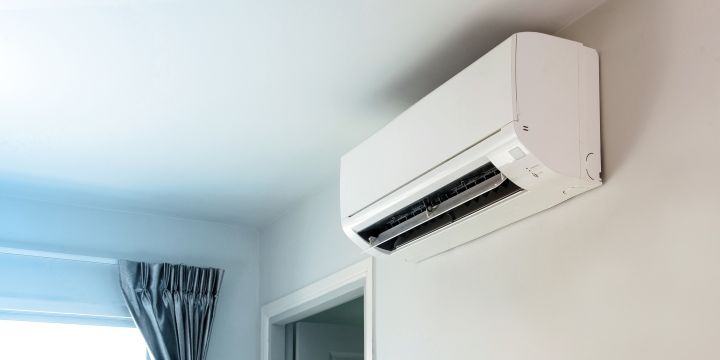Key Takeaways:
Mini-split air conditioners offer a cost-effective and energy-efficient home and office cooling solution. These systems provide numerous advantages, including flexibility in installation, zoned cooling, and reduced environmental impact. Understanding these benefits can help homeowners and business operators make informed decisions about their cooling needs.
Table of Contents:
- Introduction
- Understanding Energy Efficiency in Mini-Split Systems
- Cost Savings through Improved Energy Use
- Zoned Cooling for Personalized Comfort
- Easy Installation and Space Utilization
- Environmental Benefits
- Advantages of Traditional Air Conditioning Systems
- Conclusion
Introduction
As the demand for efficient and sustainable cooling options increases, mini-split air conditioners have become popular among homeowners and businesses. These systems offer flexibility and high energy efficiency, providing an excellent alternative to traditional air conditioning units. This article explores the energy efficiency benefits of mini-split air conditioners, detailing how they help save on costs, improve comfort through zoned control, and contribute to a healthier environment.
Understanding Energy Efficiency in Mini-Split Systems
One of the standout features of a mini split air conditioner is its ability to provide efficient cooling while consuming minimal energy. Unlike central air systems, which often suffer energy losses through long ductwork, mini-splits operate without ducts, eliminating leakage and maximizing output. This design significantly reduces energy consumption, which can be reflected in lower utility bills.
Furthermore, mini-splits often come equipped with inverter-driven compressors that adjust the speed based on the cooling demand. This technology avoids the energy surge typically seen with traditional systems that cycle intermittently. By maintaining a steady-state operation, mini-splits optimize energy use and offer a quieter, more efficient cooling experience. Additionally, many mini-split systems boast high Seasonal Energy Efficiency Ratios (SEER), a metric that measures cooling output per energy input over a given season. A higher SEER rating indicates a more efficient air conditioner, translating to significant savings over time.
Cost Savings through Improved Energy Use
The efficiency of mini-split systems naturally leads to cost advantages. Lower energy consumption directly results in reduced electricity bills. Since these units do not require ductwork, the initial installation costs can also be lower than those of central air systems. With less energy wasted through inefficiencies, homeowners and businesses often see a return on their investment through decreased operational costs.
The precise climate control offered by mini-splits allows users to adjust settings to avoid unnecessary energy use. Users can achieve substantial energy savings by tailoring the output to specific zones or turning off systems in unoccupied rooms. This control level is convenient and contributes to a more sustainable energy use pattern, ultimately benefiting both the wallet and the environment.
Zoned Cooling for Personalized Comfort
Unlike traditional systems that uniformly cool the entire home or office, mini-split air conditioners offer zoned cooling, allowing individual temperature settings for different areas. This capability ensures occupants enjoy their preferred climate while promoting energy savings by cooling only specific building parts when necessary.
This energy-efficient cooling approach accommodates various preferences and occupancy levels across multiple zones. For example, bedrooms can be kept more incredible at night without wasting energy on cooling living areas that aren’t in use. This enhances comfort and allows for more tailored usage patterns that align better with the occupants’ schedules and needs, further reducing energy waste and costs.
Easy Installation and Space Utilization
One of the significant advantages of mini-split systems is their straightforward installation process. Unlike central air conditioning, which requires extensive ductwork, mini-splits demand minimal structural modifications. The indoor units connect to the outdoor compressor via a small conduit, allowing them to be placed discreetly and without significant disruption to the building’s structure or aesthetics.
This ease of installation makes mini-splits especially appealing for retrofitting older buildings without existing ductwork or when adding climate control to spaces such as attics, basements, or garages. Their compact size means they occupy less space and can be mounted high on walls, suspended from ceilings, or installed as floor-standing units, enhancing the aesthetic and functional flexibility of cooling solutions in both homes and commercial spaces.
Environmental Benefits
Mini-split air conditioners stand out for their environmentally friendly design. Efficient energy use directly correlates to reduced power plant emissions and a lower carbon footprint for users. Additionally, many mini-split systems use eco-friendly refrigerants that are less harmful to the ozone layer than those used in conventional air conditioners.
This focus on sustainability extends to the longevity of the units, which are designed to require less frequent replacement and maintenance, further reducing waste and resource consumption. By combining energy efficiency with environmentally conscious design, mini-split systems contribute to a healthier planet and support green building standards and energy conservation goals.
Advantages of Traditional Air Conditioning Systems
Unlike traditional air conditioning systems, mini-split air conditioners offer several clear advantages. Their efficiency in operation and ability to reduce energy consumption make them a financially savvy choice for both homes and businesses. Additionally, the absence of ducts prevents the common issue of energy loss through leaks and simplifies maintenance, as there is no need for regular duct cleaning or inspection.
Furthermore, the flexibility in installation and design options makes mini-splits more adaptable to unique room configurations and architectural styles. Their unobtrusive presence and ability to blend into any environment further enhance their appeal, providing an effective and seamless cooling solution. With the benefits of zoned cooling allowing specific areas to be adjusted independently, mini-split systems deliver superior control over environmental comfort without the excessive energy use characteristic of their traditional counterparts.
Conclusion
In conclusion, mini-split air conditioners represent an effective and energy-efficient solution for modern cooling needs. Offering a range of benefits, from cost savings and personalized comfort to ease of installation and environmental stewardship, these systems are increasingly recognized for their role in promoting sustainable living and energy conservation. As more consumers seek efficient and eco-friendly cooling options, mini-splits will likely become integral to future residential and commercial climate control strategies, providing both present and future generations with comfortable and responsible cooling solutions.



